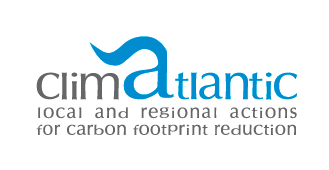NEWS & EVENTS : GENERAL INFORMATION

Increasing fragmentation of landscape threatens European wildlife
09.06.2011
A new report from the European Environment Agency (EEA) and the Swiss Federal Office for the Environment (FOEN) reveals that Roads, motorways, railways, intensive agriculture and urban development are breaking up Europe’s landscapes into ever-smaller pieces, with potentially devastating consequences for flora and fauna across the continent.
climatlantic //
As new roads and railways criss-cross Europe, the further fragmentation of the landscape increases the isolation of animal populations in smaller and more vulnerable fractions. This also increases the number of animals killed in collisions with vehicles, and transport routes block their access to resources and breeding mates. These problems are compounded by the growing area taken up by transport infrastructure and the area bordering these developments – many animals cannot live in the fringe areas. Moreover, landscape fragmentation also facilitates the spread of invasive species and reduces the ecosystem services that human society relies on.
The brown hare in Switzerland is an example of a species which has been pushed to the brink of extinction by landscape fragmentation in combination with other human impacts such as intensive agriculture. The animals' movement has been blocked by roads, so they find it more difficult to escape bad weather, and they are often killed by vehicles. Extinction of the Swiss brown hare may be impossible to avoid as the 'point of no-return' may have been crossed. Indeed, animal populations often react slowly to changes in their habitat, so the current decline may be due to changes that occurred several decades ago, with further decline in animal populations across Europe to come as a result of more recent increases in landscape fragmentation.
However, it is not all bad news - the report also presents some positive stories. For example, badgers in the Netherlands were in decline for many years, until a 'defragmentation policy' was established in 1984, encouraging developers to build 'badger pipes' to allow easier and safer movement of these shy animals. The Dutch badger population has since increased slightly.
Although the situation is critical, there are several proactive policies for more effective protection of remaining unfragmented areas, and wildlife corridors which could successfully reverse the trend of growing fragmentation. The report says that developers should build more tunnels, passages and bridges to allow animals to move more freely. In addition, planners should aim to upgrade old roads instead of building new roads, and ‘bundle’ new infrastructure, for example by building bypasses close to settlements or constructing road and rail routes next to each other.
Where the volume of traffic has fallen, roads should be reduced in size or dismantled completely. Most importantly, cumulative effects need to be considered more effectively in the future, based on the precautionary principle, to avoid repeating mistakes of the past. The problem of landscape fragmentation is also considered by the recently-adopted European Union Strategy on “Biodiversity and Ecosystems”, where infrastructure green features prominently.








